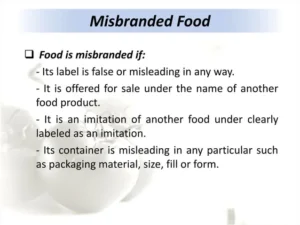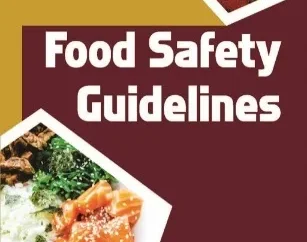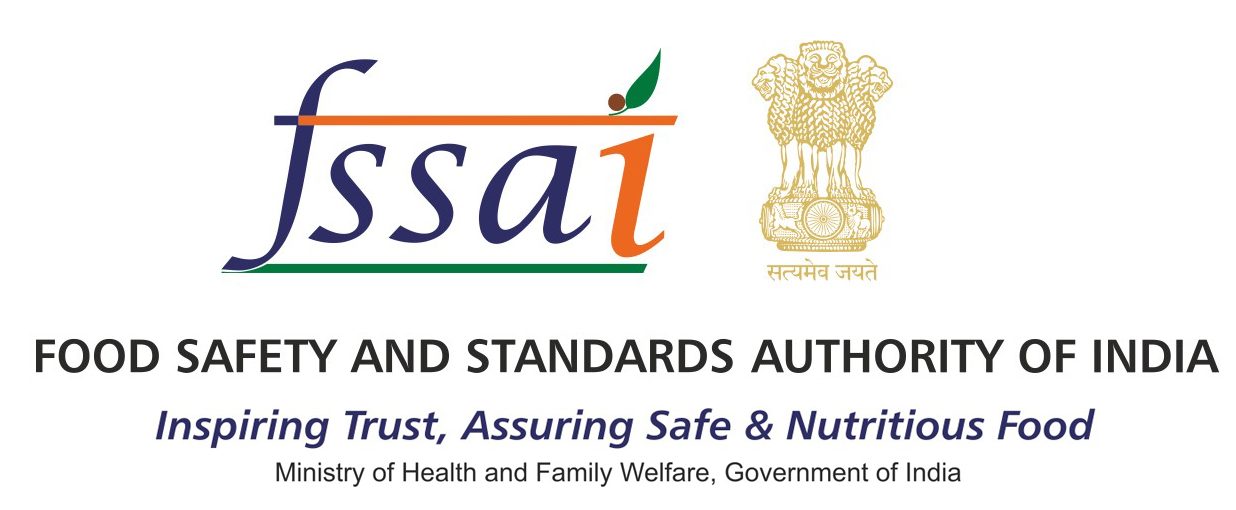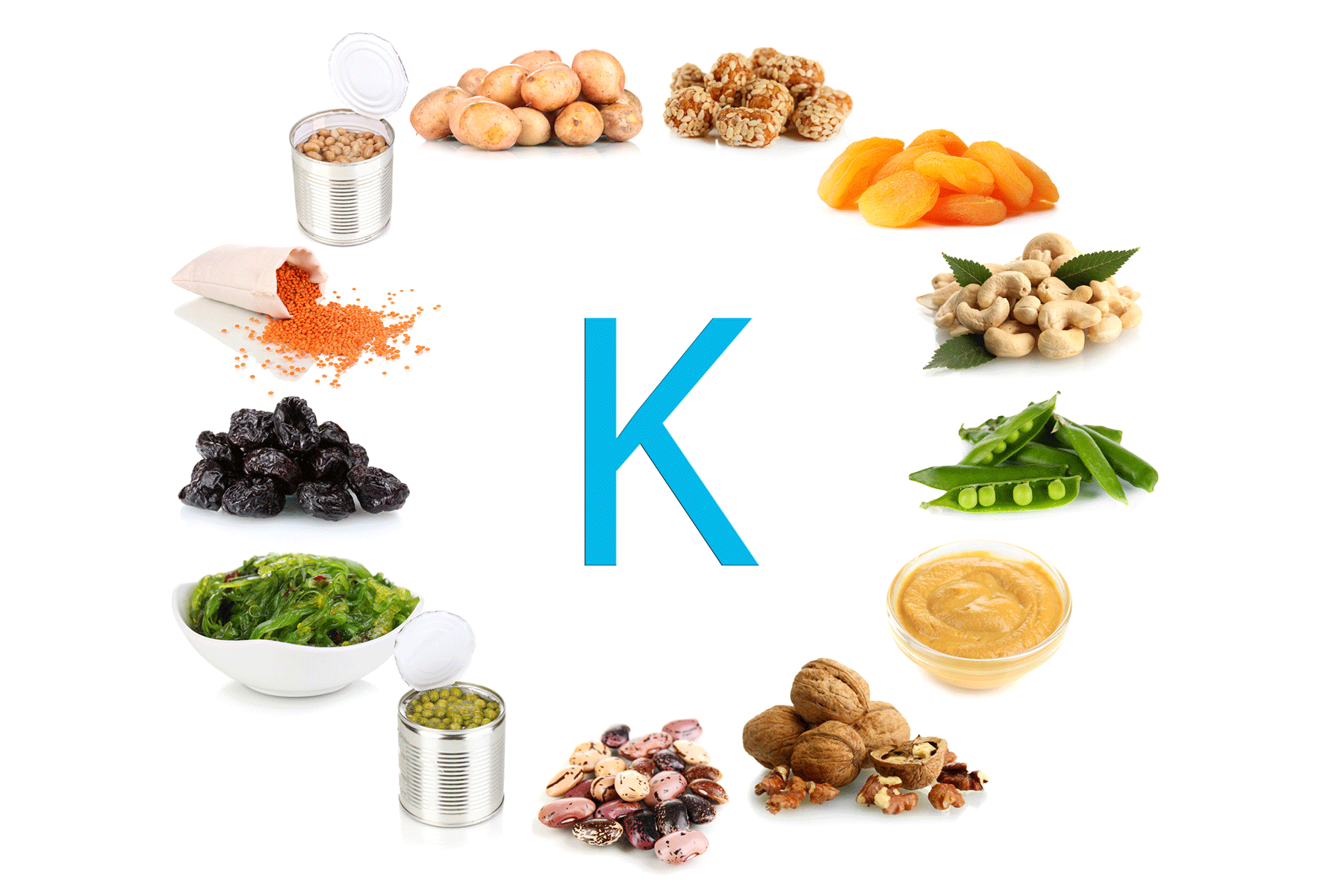In today’s food industry, consumers rely heavily on food labels to make informed decisions about what they are eating. However, issues like food misbranding and mislabelling are becoming increasingly prevalent, leading to concerns about consumer safety, transparency, and trust in food products. Both misbranding and mislabelling pose significant risks not only to the health of consumers but also to the reputation of businesses and the integrity of the food industry. This article delves into what food misbranding and mislabelling are, the consequences they bring, and how regulations aim to tackle these issues.
What is Food Misbranding?

Food misbranding occurs when a food product’s label or packaging presents false or misleading information that could deceive consumers. According to the Food Safety and Standards Authority of India (FSSAI) and similar regulatory bodies worldwide, food products must provide truthful and clear labelling, detailing information such as ingredients, nutritional content, allergens, expiration dates, and the manufacturer’s details.
Common examples of food misbranding include:
- False Advertising: A product claiming to be “100% natural” when it contains artificial additives or preservatives.
- Incorrect Nutritional Information: Labels claiming a product is low in calories when, in fact, it contains excessive sugar or fat.
- Misleading Claims: Descriptions like “heart-healthy” or “sugar-free” that don’t comply with regulatory standards or fail to meet the criteria.
What is Food Mislabelling?

Food mislabelling refers to the incorrect or incomplete information provided on a food product’s label, often unintentionally, but still leading to potential confusion or harm. Unlike misbranding, which is usually associated with deceptive intent, mislabelling typically involves errors in the labelling process.
Common examples of food mislabelling include:
- Incorrect Ingredient Listing: A food item may fail to list all ingredients or incorrectly list them, such as omitting a common allergen like peanuts or gluten.
- Inaccurate Expiry Dates: Products being sold past their sell-by or use-by date, or with incorrect shelf-life information.
- Wrong Weight or Volume: Labels showing inaccurate weights or volumes of the product, leading to consumers receiving less than what they paid for.
The Impact of Food Misbranding and Mislabelling
Food misbranding and mislabelling deceive consumers, pose health risks and undermine trust in food safety regulations.
- Health Risks
The most significant concern with food misbranding and mislabelling is the potential for health risks. For instance, consumers with allergies may unknowingly ingest ingredients that could cause severe reactions, such as peanuts or dairy. Misleading nutritional claims can also result in consumers making unhealthy choices based on incorrect information, contributing to obesity, heart disease, and diabetes.
- Legal Consequences
Businesses caught misbranding or mislabelling their food products may face legal action from regulatory bodies like the FSSAI, which could result in fines, product recalls, or even shutdowns. Repeated violations can lead to loss of market access, lawsuits from consumers, and damage to the brand’s reputation.
- Loss of Consumer Trust
When food companies engage in misbranding or mislabelling, they jeopardize their relationship with consumers. Once a consumer feels deceived or misled, trust is hard to regain. A loss of trust can have long-term financial consequences for a business as loyal customers turn elsewhere, and negative publicity spreads quickly.
Regulatory Framework to Combat Misbranding and Mislabelling
In India, the Food Safety and Standards Act, 2006 and Food Safety and Standards Regulations set stringent rules to prevent food misbranding and mislabelling. The FSSAI oversees the enforcement of these regulations, ensuring that food labels meet specific standards for safety, accuracy, and transparency.
Some of the key regulatory measures include:
- Mandatory Label Information: Food labels must clearly state ingredients, nutritional facts, allergens, manufacturer details, and expiry dates.
- Prohibition of False Claims: False or misleading claims about the food product, such as unsubstantiated health benefits, are strictly prohibited.
- Clear Allergen Warnings: Food products must display warnings for common allergens, like nuts, gluten, and dairy.
- Strict Penalties: Companies found guilty of misbranding or mislabelling may face fines, product recalls, or legal action. FSSAI has the authority to enforce these penalties.
How Consumers Can Protect Themselves
Consumers should read labels, look for FSSAI certification, and report suspicious products to ensure safety.
- Read Labels Carefully
Consumers should always read food labels thoroughly, checking for important information like ingredients, expiry dates, allergen warnings, and nutritional content. If a product claims to be “sugar-free” or “low-fat,” look at the ingredient list to confirm the truthfulness of such claims.
- Report Misbranding or Mislabelling
If consumers come across any suspicious or misleading food labels, they should report it to local authorities or the FSSAI. This helps authorities take necessary action against deceptive practices.
- Support Transparent Brands
Buying from brands that prioritize transparency and quality control can reduce the risk of consuming misbranded or mislabelled food. Consumers should look for trusted, certified labels like FSSAI-approved marks.
Conclusion
Food misbranding and mislabelling are serious issues that affect consumer safety and undermine the integrity of the food industry. Through stronger enforcement of regulations, proper consumer education, and responsible corporate behavior, we can reduce the incidence of these practices and build a safer, more transparent food market. As consumers, we must remain vigilant and aware of what we are purchasing to protect our health and ensure we are getting what we pay for.
 Food Manifest
Food Manifest 


















